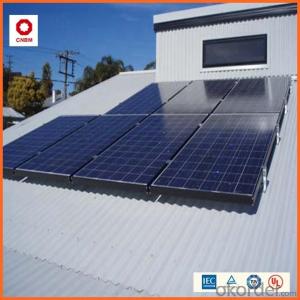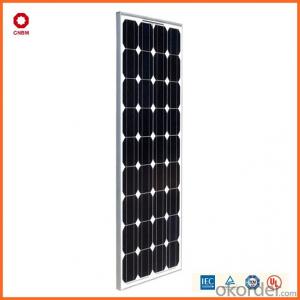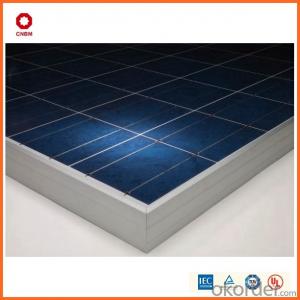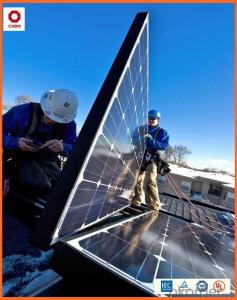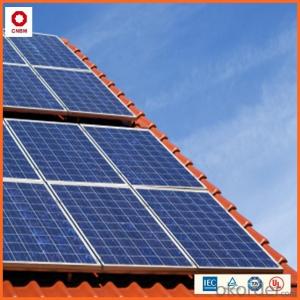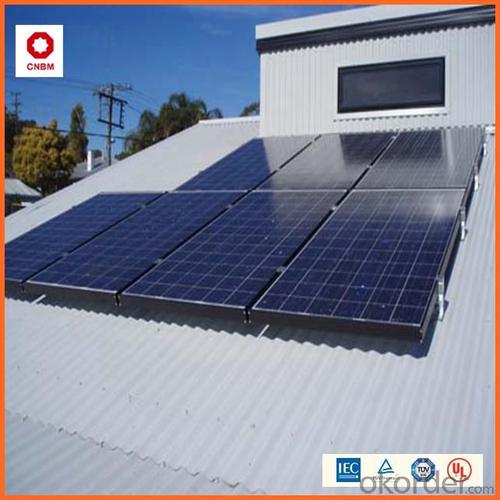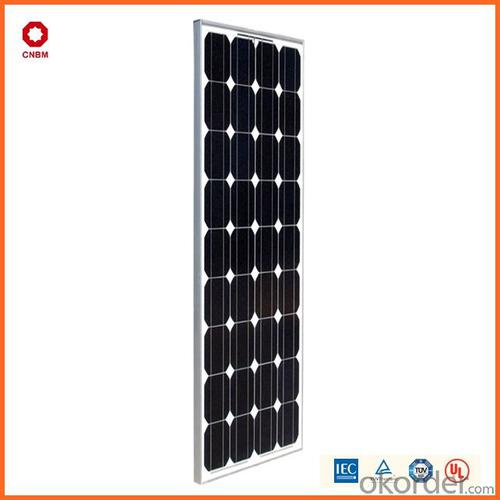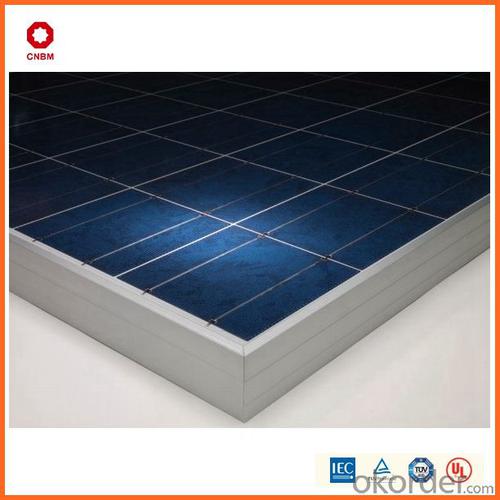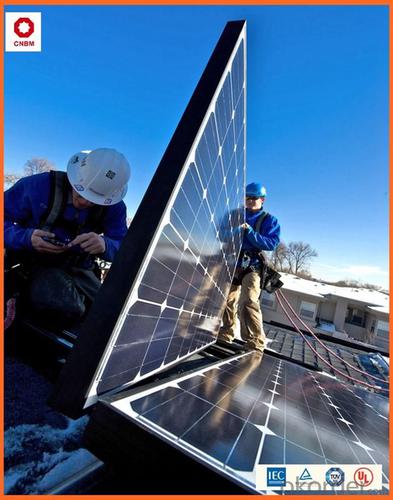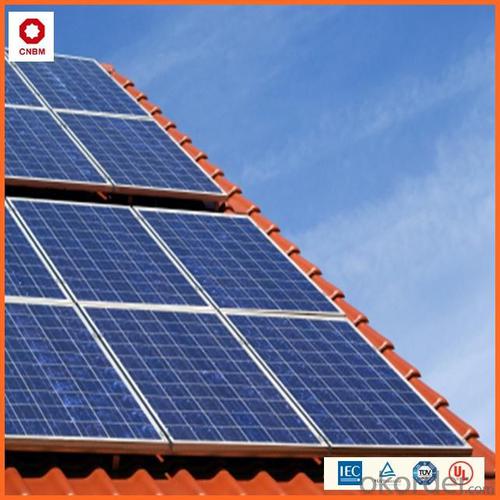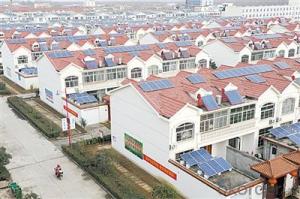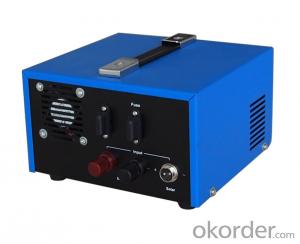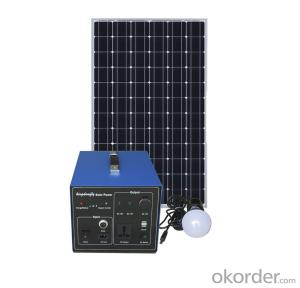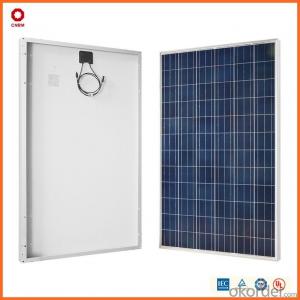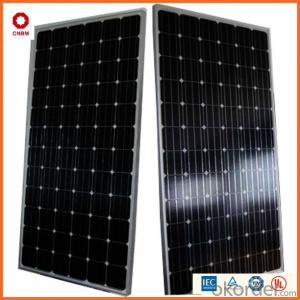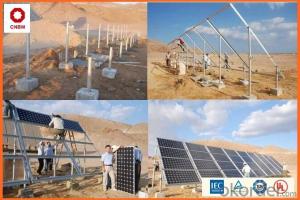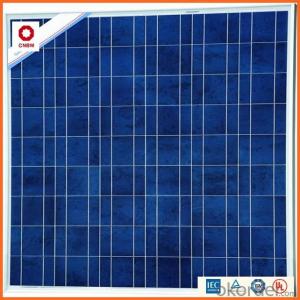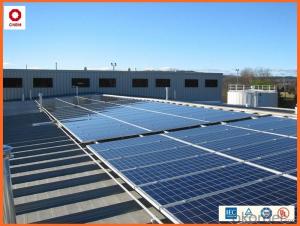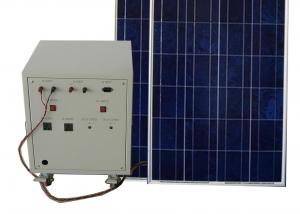125w Small Solar Panels in Stock - Solar Energy Systems Melbourne - China Manufacturer
- Loading Port:
- China main port
- Payment Terms:
- TT OR LC
- Min Order Qty:
- 1 watt
- Supply Capability:
- 10000000 watt/month
OKorder Service Pledge
OKorder Financial Service
You Might Also Like
Specification
Product Description:
Hot Sale !!! Quality and Safety of Small Poly Solar Panel 5w~150w
1. Rigorous quality control meets the highest international standards.
2. High-transmissivity low-iron tempered glass, strong aluminium frame.
3. Using UV-resistant silicon.
4. IS09001/14001/CE/TUV/UL
Warranties of Small Poly Solar Panel 35~85w
1. 10 years limited product warranty
2. 15 years at 90% of the minimal rated power output
3. 25 years at 80% of the minimal rated power output
Specification
Characteristics of Poly solar panels CNBM (245-320W) | |||||
Max Power Voltage Vmp(V) | 30.3 | 30.8 | 31.1 | 31.4 | 31.85 |
Max Power Current Imp(A) | 7.60 | 7.64 | 7.73 | 7.81 | 7.85 |
Open Circuit Voltage Voc(V) | 36.1 | 36.6 | 37 | 37.3 | 37.68 |
Short Circuit Current Isc(A) | 8.50 | 8.55 | 8.65 | 8.75 | 8.85 |
Max Power Pm(W) | 230W | 235W | 240W | 245W | 250W |
Temperature Coefficient of Cells Poly solar panels CNBM (245-320W) | |
NOCT | 45± 2 |
Temperature Coeffucients of Isc | 0.0492 |
Temperature Coeffucients of Voc | -0.3374 |
Temperature Coeffucients of Voc | -0.4677 |
Mechanical Data of Poly solar panels CNBM (245-320W) | |
Dimension | 1638 × 982 × 40 mm |
Weight | 19.5 kg |
No. of Cells and Connections | 60 (6 ×10) |
Tolerance | 0 ~ + 5 W |
Cell | Monocrystalline Cell 156 × 156 mm |
Packing | 624 Pcs/40ft(H) Container |
Limits of Poly solar panels CNBM (245-320W) | |
Operating Temperature | -40 to +85 |
Storage Temperature | -40 to +85 |
Max System Voltage | 1000VDC(IEC) / 600VDC(UL) |
Features of our products:
• High conversion efficiency mono/poly-crystalline amorphous silicon solar cells
• Modules incorporate high performance bypass diodes to minimize the power drop caused by shading
• High transmittance, low-iron tempered glass
• High performance EVA encapsulant to prevent destroying and water.
• AI frame: without screw, corner connection. 8 holes on the frame can be installed easily
• Good performance of preventing from atrocious weather such as wind and hails
• Certifications: CE IEC TUV VDE UL, Class I
• 10 years 90% power output warranty
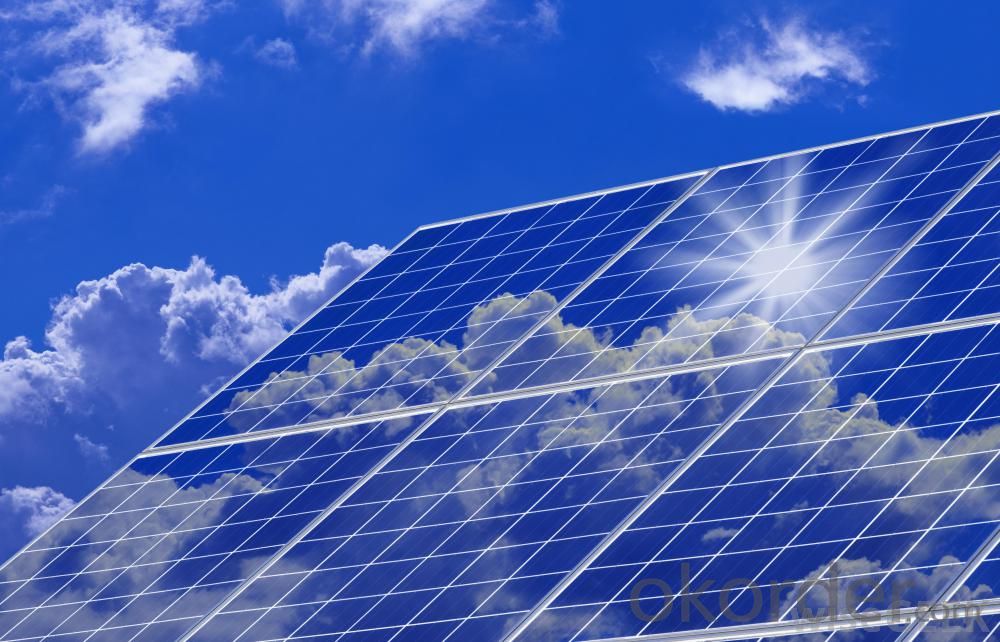
Shipping of Small Poly Solar Panel 35~85w
By Sea | Delivery from Shanghai or Ningbo seaport |
By Air | Departure from Shanghai Pudong Airport |
By Express | Post by DHL, EMS, UPS, TNT. |
Features of our products:
• High conversion efficiency mono/poly-crystalline amorphous silicon solar cells
• Modules incorporate high performance bypass diodes to minimize the power drop caused by shading
• High transmittance, low-iron tempered glass
• High performance EVA encapsulant to prevent destroying and water.
• AI frame: without screw, corner connection. 8 holes on the frame can be installed easily
• Good performance of preventing from atrocious weather such as wind and hails
• Certifications: CE IEC TUV VDE UL, Class I
• 10 years 90% power output warranty
As a professional Solar Panel manufacturer and Supplier in China, we have our customers come around the whole world and our specialization has got a worldwide recognition. Meanwhile, with our superior quality, competitive price, prompt and excellent service, As main role in trade section of CNBM Group, CNBM International Corporation supplies products including Monocrystalline Solar Panel, Polycrystalline Solar Panel ( multicrystalline silicon Solar Panel) have received and enjoyed famous reputation in many countries and regions in the world.
- Q: Can solar energy systems be used for powering off-grid eco-industrial parks?
- Yes, solar energy systems can definitely be used for powering off-grid eco-industrial parks. Solar energy is a renewable and sustainable source of power that can be harnessed through the installation of solar panels. These panels can generate electricity from sunlight, which can then be utilized to power various operations within the eco-industrial park. By relying on solar energy, these off-grid parks can become self-sufficient and reduce their reliance on traditional energy sources, thus promoting environmental sustainability.
- Q: Can solar energy systems be used in areas with limited access to solar connectors and cables?
- Yes, solar energy systems can be used in areas with limited access to solar connectors and cables. Off-grid solar systems, also known as standalone solar systems, can be installed in remote locations without relying on a traditional electrical grid or extensive wiring infrastructure. These systems typically include solar panels, batteries for energy storage, and inverters to convert the captured solar energy into usable electricity. By storing excess energy in batteries, these systems can provide power even when sunlight is not available, making them suitable for areas with limited solar connectors or cables.
- Q: Can solar energy systems be used in disaster-prone areas?
- Yes, solar energy systems can be used in disaster-prone areas. In fact, they can be particularly beneficial in such areas. Traditional power grids are often fragile and vulnerable to damage during natural disasters such as hurricanes, earthquakes, or floods. This can leave the affected areas without electricity for extended periods, hindering relief and recovery efforts. Solar energy systems, on the other hand, are decentralized and can operate independently of the grid. These systems consist of solar panels that convert sunlight into electricity, which can be stored in batteries for use during times of power outage. This allows critical facilities, such as hospitals, emergency response centers, and shelters, to continue functioning even when the grid is down. Solar energy systems can provide a reliable source of power for lighting, communication, refrigeration, and medical equipment, greatly enhancing the resilience and effectiveness of disaster response. Furthermore, solar energy systems can also be used to power water pumps, providing communities with access to clean water during times of crisis. This is particularly important in disaster-prone areas, where access to safe drinking water can be severely compromised. Solar-powered pumps can extract water from wells, rivers, or other sources, ensuring a constant supply for drinking, sanitation, and hygiene purposes. Additionally, solar energy systems can contribute to long-term recovery efforts in disaster-prone areas. By reducing dependence on fossil fuels and traditional power grids, they can help build more sustainable and resilient communities. Solar panels can be installed on rooftops or in open spaces, making use of abundant sunlight resources. This not only reduces greenhouse gas emissions and mitigates climate change but also provides a reliable and affordable source of energy for homes, businesses, and public infrastructure. In conclusion, solar energy systems can be effectively used in disaster-prone areas to provide reliable power, support critical services, and contribute to long-term resilience. By harnessing the power of the sun, these systems offer a sustainable and decentralized solution to energy needs, ensuring that communities can withstand and recover from natural disasters more effectively.
- Q: How does the efficiency of solar panels vary across different panel technologies?
- Solar panels can have varying levels of efficiency depending on the technology used. The market offers several types of solar panels, each with its own unique characteristics and efficiency levels. To begin with, monocrystalline solar panels are renowned for their high efficiency. These panels are constructed from a single crystal structure, resulting in a consistent appearance. Monocrystalline panels achieve the highest efficiency rates, typically ranging from 15% to 22%. The uniform crystal structure facilitates better electron flow, maximizing the conversion of sunlight into electricity. On the other hand, polycrystalline solar panels have lower efficiency when compared to monocrystalline panels. These panels are made from multiple silicon crystals, resulting in a less consistent appearance. Polycrystalline panels generally have an efficiency range of 13% to 16%. The presence of multiple crystals can hinder electron flow, resulting in a slightly lower conversion rate. Another type of solar panel technology is thin-film panels. Thin-film solar panels are created by depositing thin layers of photovoltaic material onto a substrate. These panels exhibit the lowest efficiency rates among the various technologies, typically ranging from 10% to 12%. However, thin-film panels possess the advantage of being lightweight, flexible, and less expensive to produce, making them suitable for certain applications where efficiency is not the primary concern. Additionally, there are emerging technologies such as bifacial solar panels and multi-junction solar cells. Bifacial panels have the ability to capture sunlight from both sides, thereby increasing their overall efficiency. Multi-junction solar cells utilize multiple layers of semiconductors to capture a wider spectrum of light, enabling higher efficiency levels. In conclusion, the efficiency of solar panels varies depending on the panel technology being used. Monocrystalline panels offer the highest efficiency, followed by polycrystalline panels and thin-film panels. Nevertheless, it is crucial to consider other factors such as cost, space availability, and specific application requirements when selecting the most suitable solar panel technology.
- Q: How do solar energy systems impact the resale value of a commercial building?
- Solar energy systems can have a positive impact on the resale value of a commercial building. Studies have shown that properties equipped with solar panels tend to sell for higher prices and attract more potential buyers. This is primarily due to the reduced energy costs associated with solar power, which can save businesses a significant amount of money in the long term. Additionally, solar energy systems also enhance the sustainability and environmental profile of a building, making it more attractive to environmentally conscious investors.
- Q: How do solar energy systems impact renewable energy targets?
- Solar energy systems have a significant positive impact on renewable energy targets. By harnessing the power of the sun, these systems generate clean and sustainable electricity, reducing our reliance on fossil fuels. Solar energy contributes to increasing the overall share of renewable energy in the energy mix, helping countries achieve their renewable energy targets and combat climate change.
- Q: Can solar energy systems be used in areas with limited access to financing options?
- Yes, solar energy systems can be used in areas with limited access to financing options. There are various financing models and programs available, such as community solar initiatives, power purchase agreements, and government subsidies, which can help make solar energy more accessible to those with limited financial resources. Additionally, innovative financing options like microloans and crowdfunding platforms can also help overcome financing barriers in these areas.
- Q: How do solar energy systems perform in different weather conditions?
- Solar energy systems can still generate electricity even in cloudy or overcast weather conditions, although their performance may be reduced. However, they are most efficient and productive in sunny weather with direct sunlight. Rain, snow, or extreme weather events may affect their performance temporarily, but solar panels are designed to withstand such conditions and continue to operate effectively.
- Q: Can solar energy systems be used in powering retirement homes or assisted living facilities?
- Yes, solar energy systems can certainly be used to power retirement homes or assisted living facilities. In fact, solar energy can be a highly beneficial and cost-effective solution for these types of facilities. Retirement homes and assisted living facilities have a high energy demand due to the need for heating, cooling, lighting, and various electrical appliances. By installing solar panels on the rooftops or in suitable areas, these facilities can generate their own electricity and reduce their reliance on the grid. Solar energy systems can help these facilities reduce their operating costs significantly, as they can offset a considerable portion of their electricity bills. This is especially important for retirement homes and assisted living facilities, as they often operate on tight budgets and need to allocate resources efficiently. By harnessing solar power, these facilities can redirect the saved funds towards providing better care and services for their residents. Furthermore, solar energy systems contribute to a cleaner and greener environment. Retirement homes and assisted living facilities have a responsibility towards their residents' well-being, and by using solar power, they can reduce their carbon footprint and promote sustainability. This can have a positive impact on the health and overall quality of life for the residents. Additionally, solar energy systems can provide a reliable source of power during emergencies or power outages. Particularly in areas prone to extreme weather events, where power disruptions are more common, having a solar energy system with battery storage can ensure continuous and uninterrupted power supply to critical areas such as medical equipment, lighting, and HVAC systems. In conclusion, solar energy systems are a viable and beneficial option for powering retirement homes or assisted living facilities. They can significantly reduce operating costs, promote sustainability, and provide a reliable source of power, ultimately improving the quality of care and services provided to residents.
- Q: How do solar energy systems impact the overall sustainability of a home?
- Solar energy systems have a significant positive impact on the overall sustainability of a home. By harnessing the power of the sun, these systems generate clean and renewable energy, reducing reliance on fossil fuels and decreasing greenhouse gas emissions. Solar panels promote energy efficiency, helping to lower electricity bills and save money in the long run. Additionally, solar energy systems contribute to the resilience of a home, enabling homeowners to be less dependent on the grid during power outages. Overall, solar energy systems play a vital role in enhancing the sustainability and environmental footprint of a home.
Send your message to us
125w Small Solar Panels in Stock - Solar Energy Systems Melbourne - China Manufacturer
- Loading Port:
- China main port
- Payment Terms:
- TT OR LC
- Min Order Qty:
- 1 watt
- Supply Capability:
- 10000000 watt/month
OKorder Service Pledge
OKorder Financial Service
Similar products
Hot products
Hot Searches
Related keywords
